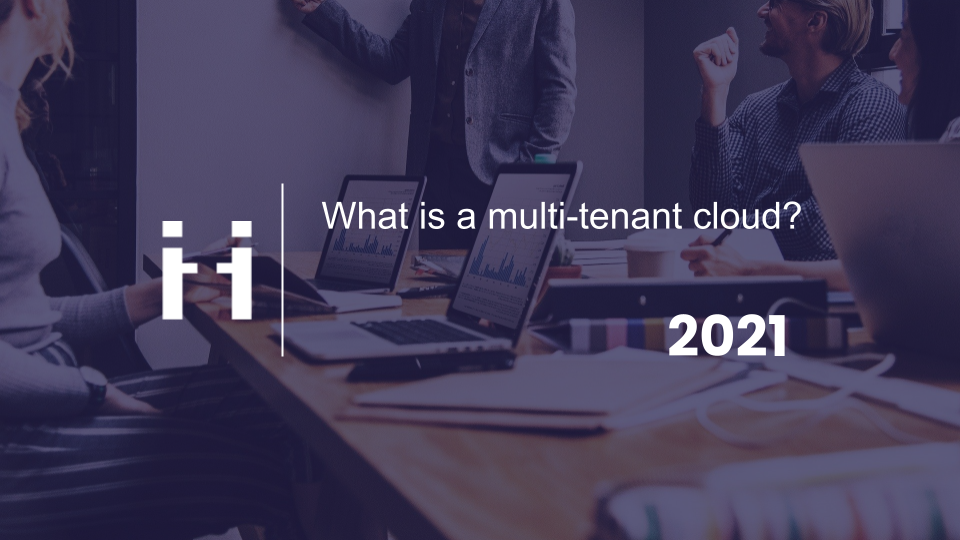
Share this article
Share this article
The term multi-tenancy stands for multiple different customers using services from the same cloud. A tenant of such a cloud can be both a company or an individual user, all of them sharing the same cloud infrastructure and storing their data on the same server – thus such multi-tenant clouds are considered a lower-cost alternative to single-tenant cloud hosting. Although multi-cloud tenants share the same computing resources, their actions are kept separately and they are never aware of each other.
Though efficient and innovative, having multiple users store data on the same cloud can cause fears over the safety of one’s data. As many as 66% of IT professionals state that the possible security risks are their biggest concern when considering switching to cloud platforms. Multi-cloud vendors have to not only ensure that the multi-tenant data is isolated but also do everything so that all the stored information is safe both while in use and at rest, all the while protecting your network and storage – and they have to provide such protection to all its users individually.
To ensure utmost data security and its seamless resolution, multi-tenant clouds have thus adopted a shared responsibility model, where cloud vendors share security responsibilities together with their individual users. What does that mean exactly? In a shared security instance, cloud providers are not in charge of data protection to the full extent – the companies and individuals themselves have a responsibility to keep track of their daily actions and security measures they undertake.
Considering a staggering 95% of cloud security failures are caused by no one else but its users, any inconsistency or a glitch from the user’s side could hamper the cloud vendor’s ability to protect it successfully – whether it’s choosing a weak password, not implementing strong security rules, or leading a careless approach towards providing access to your company’s data center.
The multi-tenant architecture of cloud computing stems from a multi-cloud strategy – a cloud storage system that uses more than one type of cloud storage server and picks the most suitable cloud for each application and service. It thus allows for a delivery of services across both the public and the private cloud storage, and mixes SaaS together with PaaS and IaaS – to find which combination is the most appropriate at the given moment.
Although a multi-cloud strategy can primarily seem very similar to hybrid cloud computing, there are a few aspects that differentiate the two. The hybrid cloud storage model works in conjunction by navigating data across both the public and the private company services to achieve particular business goals. It always includes the enterprise’s private cloud infrastructure and merges it with one or more public clouds. Multi-clouds, however, do not need to incorporate a private cloud component.
Due to the number of features and flexibility they provide, multi-cloud storage practices have been growing in popularity, with 85% of enterprises now running within multi-cloud environments. Multi-clouds have the ability to address specific business requirements, as well as help avoid the limitations of a single-tenancy. They work within multiple public cloud services which usually perform different functions and offer different features, making it easier to evaluate which components and accessed data would work best for your specific business model, resource availability, and storage capacity.
By having access to different vendors and storage servers, multi-cloud is able to pick the one that is most suitable and optimal for your business at that particular moment. Such a multi-tenant cloud offering is more cost-effective, more reliable, and improves the overall performance of the business.
When talking about multi-cloud database management, one means the process of tracking, developing, optimizing, and securing data within a cloud that hosts multiple tenants. Managing data from many different organizations using the same cloud services poses different challenges to navigating a singular cloud. The data is spread across various public clouds, each of them containing different features and tools.
Considering that an average employee uses more than 30 cloud-based services every day, looking after database operations within each cloud used internally can be tedious and time-consuming – thus multi-cloud management practices have been on the rise. Effective and efficient data management on a multi-tenant cloud should provide services such as:
Multi-cloud management has become a popular choice amongst various businesses as it holds significant advantages. Apart from being a much more time-efficient and cost-effective solution, it also speeds up optimization and enhancements, puts an emphasis on system protection, and promotes automatization, thus boosting both business and workforce performance.
Multi-tenant clouds are nowadays considered the most leading cloud services out there – and for all the right reasons. Multi-tenant models can be a great solution for businesses aiming to maximize their database utilization, promote utmost organization processes, all the while offering high-quality services to customers for an affordable price.